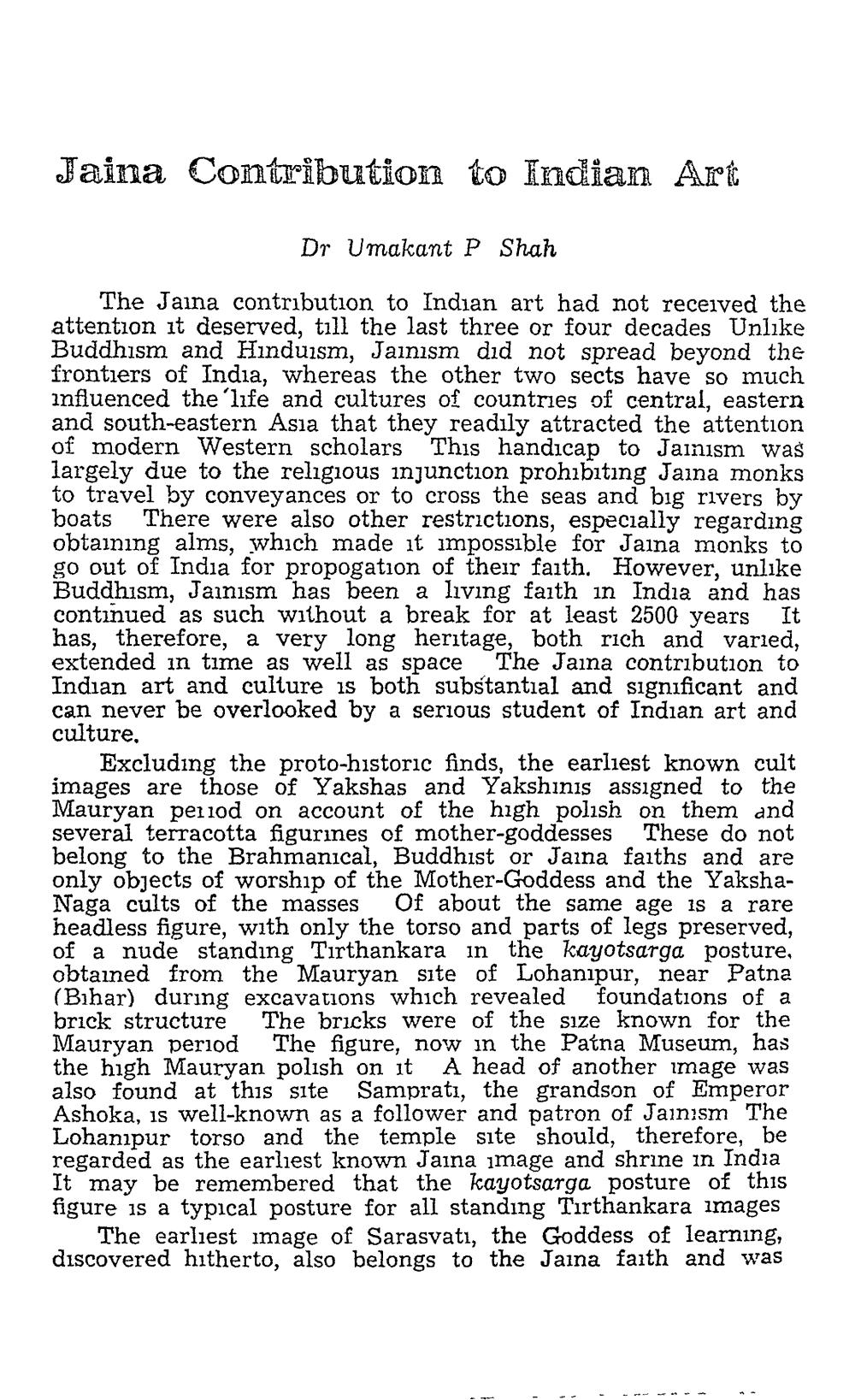________________
Jaina Contribution to Indian Art
Dr Umakant P Shah
The Jaina contribution to Indian art had not received the attention it deserved, till the last three or four decades Unlike Buddhism and Hinduism, Jainism did not spread beyond the frontiers of India, whereas the other two sects have so much influenced the 'life and cultures of countries of central, eastern and south-eastern Asia that they readily attracted the attention of modern Western scholars This handicap to Jainism was largely due to the religious injunction prohibiting Jaina monks to travel by conveyances or to cross the seas and big rivers by boats There were also other restrictions, especially regarding obtaining alms, which made it impossible for Jaina monks to go ou at of India for propogation of their faith. However, unlike Buddhism, Jainism has been a living faith in India and has continued as such without a break for at least 2500 years It has, therefore, a very long heritage, both rich and varied, extended in time as well as space The Jaina contribution to Indian art and culture is both substantial and significant and can never be overlooked by a serious student of Indian art and culture,
Excluding the proto-historic finds, the earliest known cult images are those of Yakshas and Yakshinis assigned to the Mauryan period on account of the high polish on them and several terracotta figurines of mother-goddesses These do not belong to the Brahmanical, Buddhist or Jaina faiths and are only objects of worship of the Mother-Goddess and the YakshaNaga cults of the masses Of about the same age is a rare headless figure, with only the torso and parts of legs preserved, of a nude standing Tirthankara in the kayotsarga posture, obtained from the Mauryan site of Lohanipur, near Patna (Bihar) during excavations which revealed foundations of a brick structure The bricks were of the size known for the Mauryan period The figure, now in the Patna Museum, has the high Mauryan polish on it A head of another image was also found at this site Sampratı, the grandson of Emperor Ashoka, is well-known as a follower and patron of Jainism The Lohanipur torso and the temple site should, therefore, be regarded as the earliest known Jaina image and shrine in India It may be remembered that the kayotsarga posture of this figure is a typical posture for all standing Tirthankara images
The earliest image of Sarasvati, the Goddess of learning, discovered hitherto, also belongs to the Jaina faith and was




